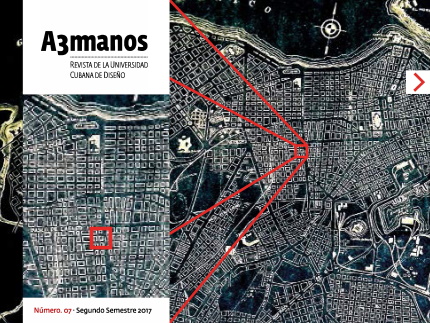Industrial design of products with the application of information and communication technologies.
##plugins.themes.bootstrap3.article.main##
Abstract
The application of information and communication technologies (ICT) in the design process has as a direct antecedent the publication in 1963 by Ivan Sutherland of the Massachusetts Institute of Technology (MIT) of his doctoral thesis on interactive computer graphics. From that moment, the accelerated development of ICT has allowed its use in almost all human activities. Its use spread quickly in the industrial field and specifically in product design, where it has become essential in all stages of the product design process, especially when the concurrent design methodology is used.
The process of incorporating ICT into product design has been carried out gradually, as new tools were developed, without mediating a characterization of them that would allow efficient and effective use in the different stages of the process of product design.
##plugins.themes.bootstrap3.article.details##

This work is licensed under a Creative Commons Attribution-NonCommercial-ShareAlike 4.0 International License.
- Attribution — You must give appropriate credit , provide a link to the license, and indicate if changes were made . You may do so in any reasonable manner, but not in any way that suggests the licensor endorses you or your use.
- NonCommercial — You may not use the material for commercial purposes .
- No additional restrictions — You may not apply legal terms or technological measures that legally restrict others from doing anything the license permits.
- ShareAlike — If you remix, transform, or build upon the material, you must distribute your contribution under the same license as the original. NOTE: This point applies to numbers 1 to 20 of the magazine with the previous CC-BY-NC-SA 4.0 license. Does not apply to the new CC BY-NC 4.0 license from Volume 11, Number. 21 (2024).
References
Angulo C. (2002). Método de diseño industrial asistido por com- putadoras. MDIAC. CyAD, UAM Azcapotzalco, México.
Bernal, R. (2002). Propuesta de un modelo del proceso de Di- seño Industrial apoyado en las nuevas tecnologías de la informa- ción y su aplicación. CyAD, UAM Azcapotzalco, México.
Betancourt J. L. (2016). Nuevas tecnologías para el diseño. Maestría Gestión de Diseño, Módulo Nuevas tecnologías para el diseño, Conferencia 1. ISDi, La Habana, Cuba.
Bonilla, A. (2003). Guía Básica para la aplicación de las TICS en PYMES. Cap. 1 Herramientas de diseño e ingeniería.
Candal M. V. (2005) Integración CAD/CAE/CAM-PR en la optimización del diseño de productos plásticos: caso de estudio. Revista Ciencia e Ingeniería. Vol. 26 No. 3. Universidad Simón Bolívar, Caracas, Venezuela.
García L. A. (2013). Metodología de integración de las técnicas MMC/CAD/CAM para la reproducción de una pieza Metal-Mecánica.
Peña, S. (2007). Propuesta de currículo para la formación de diseñadores. Tesis para optar por el título de Máster en Gestión de Diseño. ISDi, La Habana, Cuba.
Pérez, M. (2015). Teoría de Diseño. Maestría Gestión de Diseño, Módulo Teoría de Diseño, Conferencia 1. IS- Di, La Habana, Cuba.
Quesada A. M. y Pérez R. CAD/CAM en la industria de fabricación de herramientas. Universidad de Hol- guín Oscar Lucero Moya.






















